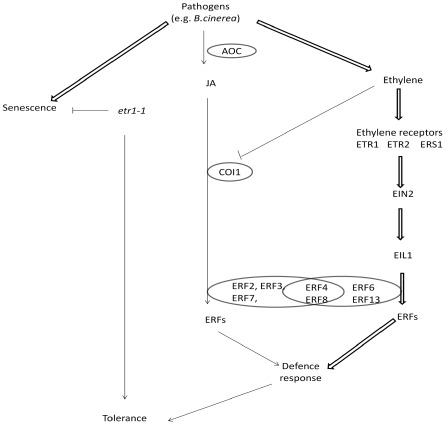Figure 9.

Model of ethylene/jasmonate (JA) independent pathways of petunia response to pathogens. When petunia encounters pathogen, the biosynthesis and activation signalling of the ethylene pathway are induced (wide arrows). Subsequently, some petunia ethylene response factor (PhERF) genes, such as PhERF4, PhERF6, PhERF8 and PhERF13, are activated in order to induce plants to launch the basal defence response, although finally programmed cell death and senescence occur. Otherwise, the ethylene signalling pathway is completely blocked by induced ethylene‐insensitive1‐1 (etr1‐1) expression, and the biosynthesis and consequent signalling of the JA pathway are induced by B. cinerea infection (narrow arrows). Some PhERFs, such as PhERF2, PhERF3, PhERF4, PhERF7 and PhERF8, are activated at the transcriptional level. In turn, the transcriptional accumulation of defence‐related genes, together with delayed senescence (narrow arrows) makes ethylene‐insensitive petunia tolerant to the pathogen to some extent (narrow arrows). See text for gene definitions.
